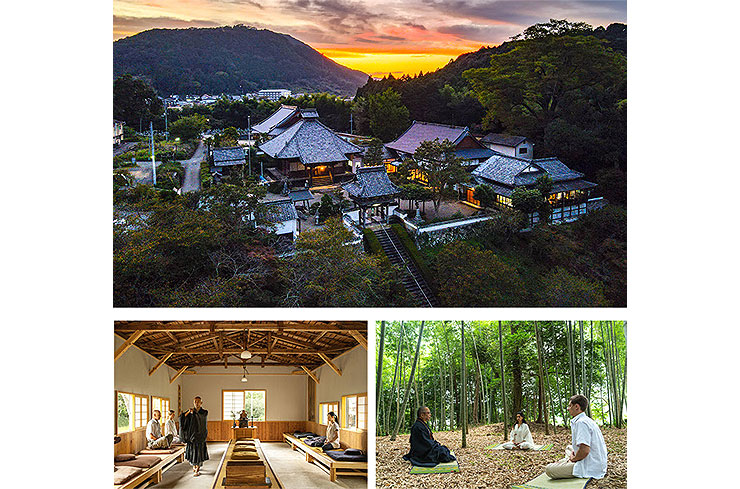The Ryokan Collection’s Partner, OTERA STAY unveiled the authentic experiences in luxurious temple stay, “Shukubo”

Japanese temples have been a community gathering place, a place that supports the spiritual and cultural life of the Japanese. They are home to a Japanese aesthetic and spirit that reflects the lived experiences of our ancestors, not just their religious beliefs. And these temples, precious repositories of nearly 1500 years of history, still stand open today, ready to welcome any and all.
OTERA STAY was founded in 2016, with the founder, Mai Sato’s huge passion that promotes the authentic luxury of “Shukubo,” temple lodging to the world.
“We, OTERA STAY, are the brand that delivers the time and place to revive your mind and body from Japan to the world, with the theme of a place to explore and life-changing experiences. We are the changemaker of a well-being lifestyle for you”, says Mai Sato, the founder of OTERA STAY.
The Foundation of Temples in Japan
Temples are a keystone of Japanese culture. Called otera in Japanese, they have played an indispensable part of daily life for more than a millennia. While their history stretches back to the ancient Buddhist monasteries of India, the local story begins in 596 with the completion of the first temple in Japan. As Buddhist beliefs then spread across the archipelago, so too did temples, intertwining with the native Shinto religion to take a place in the life of nearly every person, not just as a religious institution but as a social and cultural one as well. You might even say the first welfare center in Japan was a temple, as Osaka’s Shitennoji Temple, founded in 593, cared for the city’s sick and destitute. In the 17th century, the Buddhist Tokugawa shogunate required citizens to get a certificate of affiliation from a temple as a way of suppressing Christian influence. The housing of all family graves then deepened the temples’ role in the community, connecting each family to its ancestors through funeral and memorial rites. Around the same time, temples also became centers of learning, places people sent their children to study reading and writing. Over the centuries, temples have played a civic role far beyond their spiritual one, offering medical care, education, and even lodging for travelers.
Japanese temples have thus been a community gathering place, a place that supports the spiritual and cultural life of the Japanese. They are home to a Japanese aesthetic and spirit that reflects the lived experiences of our ancestors, not just their religious beliefs. And these temples, precious repositories of nearly 1500 years of history, still stand open today, ready to welcome any and all.
What a Temple, “Otera” is…
For us, a temple is a beautiful garden that reflects the passing of the seasons, a gentle breeze flowing through an open space, trees swaying as if in quiet conversation, the freely fluttering dance of birdcall, the keenly sacred atmosphere that permeates the grounds. A temple is a place where we can honor the souls of our ancestors, where we are granted the time for inward reflection so often forgotten in the hectic pace of modern life. Temples have long been the place people came to ponder life’s great questions. Where does the self come from and where does it go? What is life? What is death? Even now, in times of doubt or difficulty, we continue to come to a temple to try to find our proper path. These days, we live in a constantly shifting world of emotions and things, always striving towards something, but a temple allows us to silence that striving self to nothingness, baring our underlying soul. It reminds us that the answers we seek are always within ourselves and that everything in this universe, all matter, us humans included, is full of an intrinsic emptiness. A temple is a place that always purifies us of negative emotions, a place that offers helpful intimations to any visitor who comes seeking answers. Finally, a temple is a place that provides a sense of peace and security just by its continued existence, a reliable retreat always nearby.



